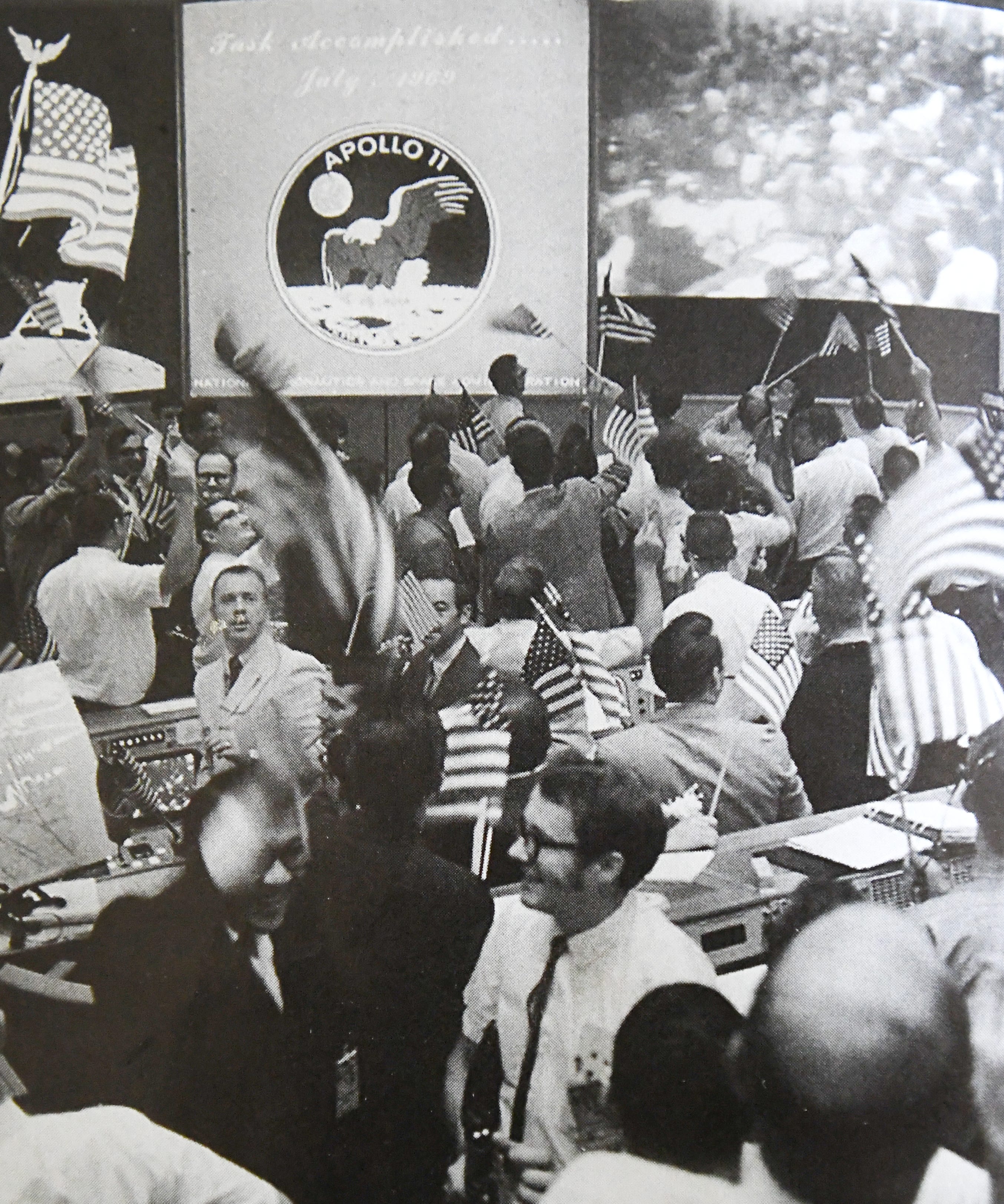For Harlan Neuville, Saturday’s golden anniversary of the Apollo 11 lunar landing brings back vivid memories as a senior engineer in Mission Control at the Manned Spaceflight Center in Houston. His work played a key role in putting man on the moon.
The 88-year-old Lake Orion resident worked for Delco Electronics, where he built guidance and navigation systems for airplanes and Titan nuclear missiles. The technology to steer a ship through space was similar, so in 1965 he was asked to manage the development of navigation systems on Apollo spacecraft.
As the Apollo 11 moon lander approached the surface on July 20, 1969, there was plenty of tension and concern in the air inside Mission Control, Neuville remembers.
“To say we were holding our breaths is an understatement,” he said. “We just didn’t want anything to go wrong. Fortunately, everything went as planned. We were very happy they landed safely with no damage to the spacecraft.”
The ambitious plan to put American astronauts into orbit and then take them to the moon and back was born from a public directive from President John F. Kennedy in 1961 in response to the Soviet Union putting a man in space first.
Neuville said the U.S. government engaged the scientific community to reach the moon much like it did to build the atomic bomb. Hundreds of thousands of engineers and support staff mobilized across the country to develop the spaceship, Saturn V booster rocket, command center and launch tower.
“I definitely thought it was possible to send a man to the moon,” Neuville said. “We had a three-year jump since we’d already developed a navigation system like this for airplanes and the missile program.
“The systems would have to be adapted to Apollo, but we were working with the latest technology available anywhere.”
Apollo 11 engineer Harlan Neuville on the future of space travel Daniel Mears, The Detroit News
As the Apollo program progressed and the moon shot grew closer, everyone questioned if the Saturn V rocket would work, Neuville said. Smaller booster rockets had put one- and two-man space capsules into space, but going to the moon would require a three-man orbiter, plus landing module and other heavy equipment. The 364-foot tall rocket weighed 525,500 pounds loaded.
After the successful launch, Neuville and his team were relieved four days later when Neil Armstrong and Buzz Aldrin became the first humans to successfully land on the moon, but the stress did not end there.
“We got them to the moon, but now we had to get them home,” he said. “We weren’t sure if they could actually get off the moon’s surface. It had never been done before. Nobody celebrated until they splashed down in the ocean.”
There were plenty of other nervous moments for the Apollo program engineers, none more unsettling than during the Apollo 13 mission, Neuville said. An explosion onboard the space capsule on the way to the moon severely damaged the ship, endangering the crew. The spacecraft’s navigation and guidance systems had to be shut down to conserve power.
“There were very delicate components, designed to stay on the whole time,” he said. “Once we shut them down, we had to sweat it out because we weren’t sure if they would turn on again. We took a big chance but there really wasn’t an alternative.”
Their gamble paid off, with the ship making it back to Earth five days later with barely any oxygen left but the astronauts home safe.
Neuville supported a total of six lunar landings, the last of which took place in 1972. He then worked on navigation and guidance systems for Skylab and the Apollo-Soyuz space mission with the Soviet Union.
Surprisingly, Neuville said he never wanted to step in the shoes of the astronauts he worked with during the Apollo program.
“I couldn’t tolerate the training,” he said. “Those astronauts were very motivated people. They were fighter pilots and had that mentality. You put me in 10gs (ten times gravity) and I would die.”
Delco Electronics did not win the contract to help build the space shuttle, so Neuville was assigned to parent company GM’s technical center in Warren in the late 1970s, where he worked on non-automotive transportation systems. He retired from GM in 2002.
Neuville and his family returned to Houston last year for a special visit to the Johnson Control Center. There, he had a chance to tour the current Mission Control facility. The original control center where he worked was being restored for a public celebration of the 50th anniversary of the moon landing this week.
“It’s a different room, but the new control center features much of the same types of equipment that we had and it works the same way,” he said. “It was exciting to see.”
With the 50th anniversary of Apollo 11 here, he knows today that he was part of something special in the history of mankind.
“We were the first country to go to the moon, and nobody has done it since,” Neuville said. “It’s something to be very proud of all these years.”
U.S. Vice President Mike Pence recently said America will return to the moon in the not-too-distant future, with man’s first trip to Mars next. Neuville is optimistic.
“We have the technology and volunteers to do it,” he said. “We just need the money and desire to make it a priority to get it done.”
Electrical engineer Harlan Neuville, bottom center with glasses, and other Mission Control workers celebrate the landing of Apollo 11 on the moon on July 20, 1969. (Photo courtesy of Harlan Neuville)

No comments:
Post a Comment